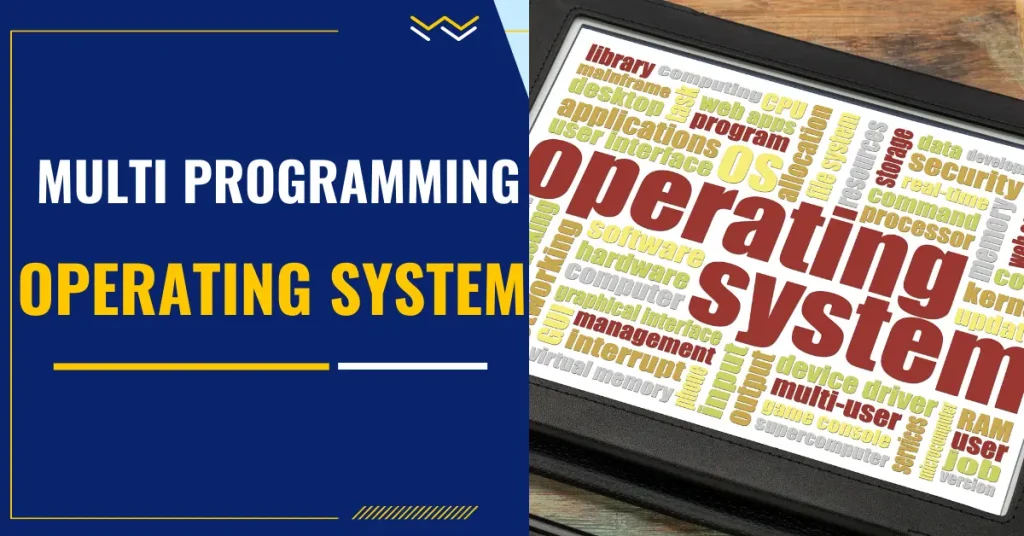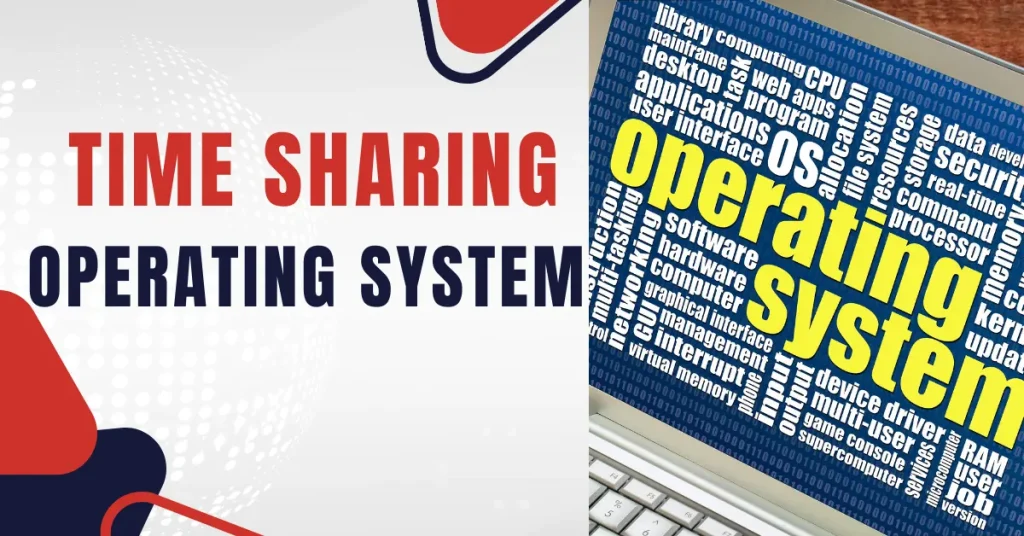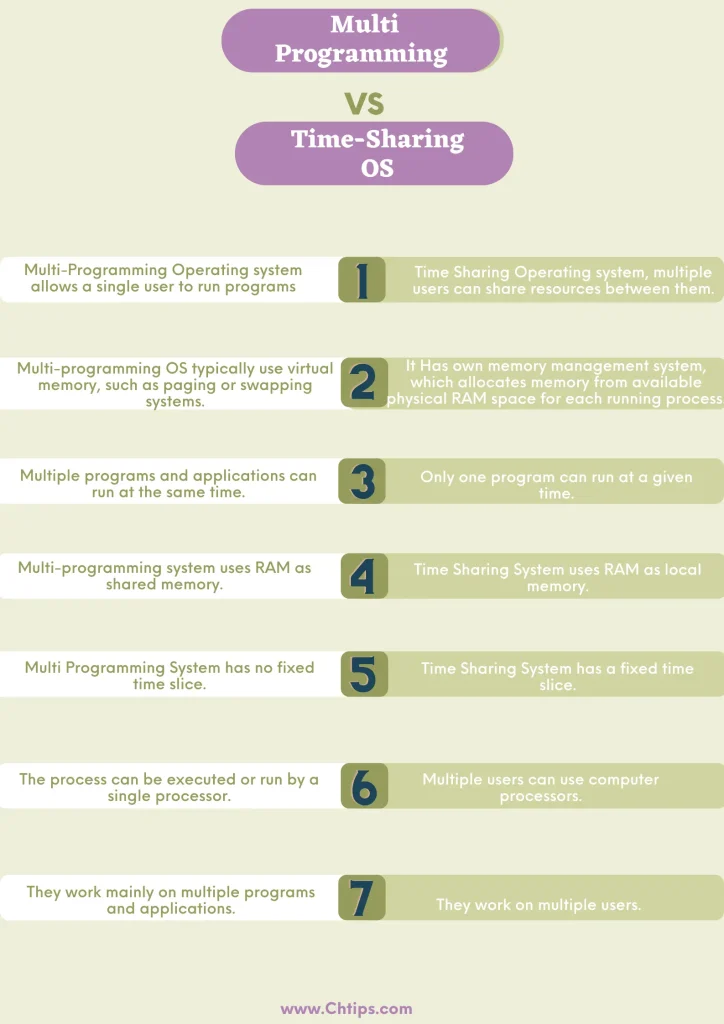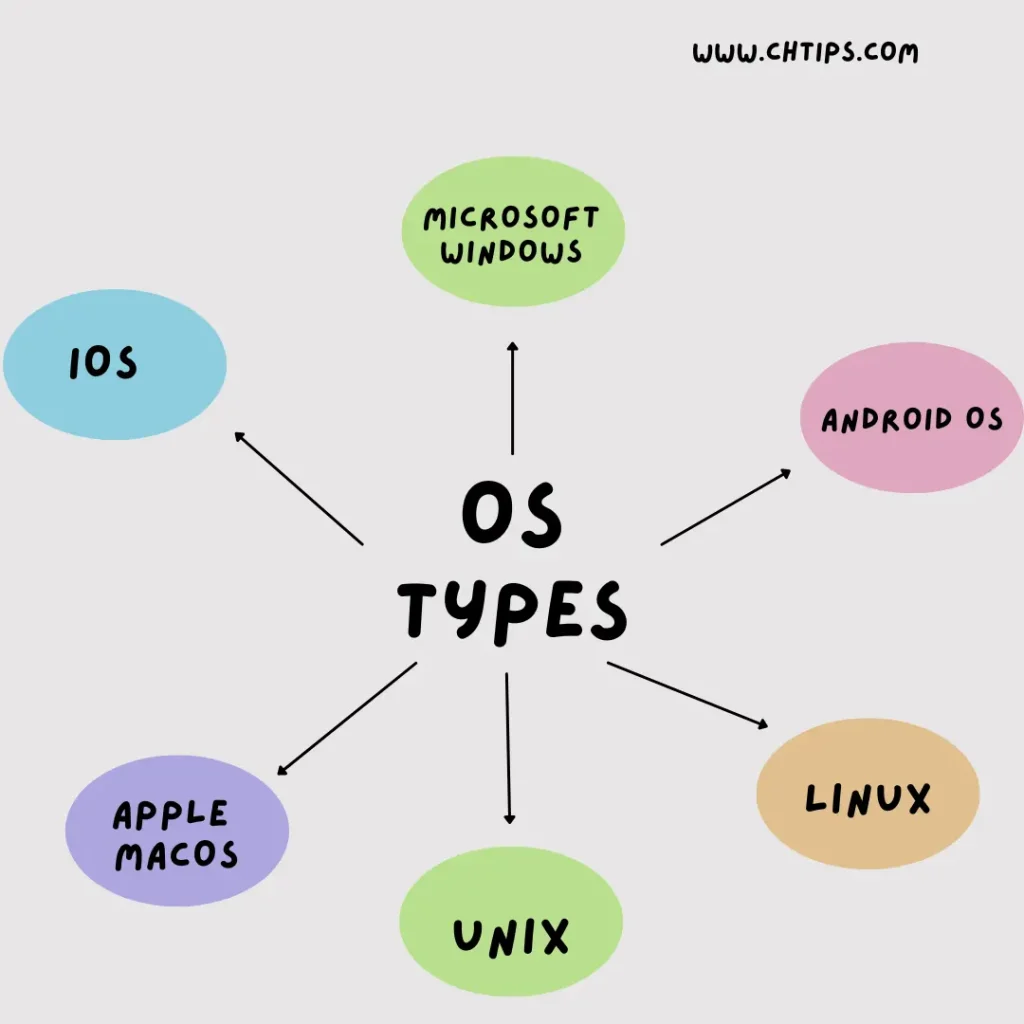The operating system is the software that runs on your computer.
It keeps all of those pieces of hardware working together and makes it possible for you to use your computer as a tool.
It also allows you to run applications like word processors or spreadsheets or even games like Solitaire or Minesweeper.
There are different types of operating systems.
Let us discuss some significant and major Difference Between Multi-Programming OS and Time Sharing OS [Multi-Programming Vs. Time Sharing OS].
An operating system is a set of programs that control computer hardware and software.
It includes an interface so that people can use the computer and an internal structure that allows different pieces of software to share resources.
The operating system provides the basis for all other software on the computer, including applications such as word processors and spreadsheets.
The OS also determines how fast your machine will run and what kind of performance it delivers in terms of memory, disk space, and processor speed.
What is Multi Programming Operating System Explain?
The term "multiprocessing" refers to an environment where multiple processors are available for use by processes running on the system.
Multiprogramming was first developed during World War II as part of the Manhattan Project (the development of nuclear weapons).
It allowed scientists working on different project parts to collaborate while still completing their work independently without being distracted by other people’s discussions or interruptions from other departments within the facility where they worked.
The Multi Programming operating system is software that can run numerous or multiple programs simultaneously on your computer system.

It also allows different applications to share resources between them so that each program and application runs and executes much faster and more efficiently than it was running alone.
Multi-programming OS is generally used when many tasks need to be completed quickly.
They allow you to work on several projects simultaneously without switching between them every few minutes.
A multilingual operating system makes it easy for people to use their device in any country or region without learning local languages or installing software updates every time there’s an update.
The Most Common Multilingual OS Include
Windows (English, French, German) – Microsoft originally created Windows as an operating system for personal computers, but now it’s available on all types of devices, including tablets and smartphones
The most important benefit of using a multi-programming operating system is that it allows you to run multiple programs and applications simultaneously.
This is particularly useful if you’re running an application that requires constant access to your computer’s resources (such as a video game or graphics application).
The other advantage of having a multi-programming operating system is that it makes it easier for you to switch between programs without losing track of where they were before.
The first reason for creating a multi-platform application is to work on different types of devices.
This could include desktop computers, laptops, tablets, and mobile phones (or any combination).
The second reason is to make your application work equally well across all platforms; there are no differences in functionality or UI design between platforms, so each device should get exactly what it needs from your app!
This differs from single-tasking, which allows only one program to run at any given time.
What is Time Sharing Operating System?
The time-sharing operating system is a type of operating system that allows multiple users to share, use and utilize s
The main purpose of this type of OS is to provide each user with a virtual machine, allowing them to run applications on it without interfering with other programs that are running in parallel (i.e., simultaneously).
With traditional desktop computers, only one user has access to all the hardware components inside the machine — such as CPU, RAM, and Hard Disk Drives.
However, when using a time-sharing OS (such as Windows or Linux), each end-user gets his own virtual machine within which they can install any application they want (including games) while still having full control over everything else around them too (like window size/location, etc.).
Time-sharing is an operating system that allows more than one person to use a computer at the same time.

The person who uses the computer is called a "user" or "client".
The person who owns the computer and sets up the software is called a "system administrator" or "administrator".
The goal of time sharing is to allow many people to use computers without being monopolized by those who know how to use them best.
This helps users save time on installing programs and upgrading them when needed.
Time-sharing systems are used in many industries and applications, including banking, education, government, and media.
They have also been used as an alternative method for accessing computers.
Difference Between Multi-Programming OS and Time Sharing OS [Multi-Programming Vs. Time Sharing OS] in Tabular Form
| # | Multi-Programming OS | Time Sharing OS |
| 1 | A multi-Programming Operating system allows a single user to run programs and applications on the same machine at once. | In the Time Sharing Operating system, multiple users can share resources between them. |
| 2 | Multi-programming OS typically uses virtual memory, such as paging or swapping systems. | Time Sharing OS has its own memory management system, which allocates memory from available physical RAM space for each running process. |
| 3 | Multiple programs and applications can run at the same time. | Only one program can run at a given time. |
| 4 | The multi-programming system uses RAM as shared memory. | Time Sharing System uses RAM as local memory. |
| 5 | Multi Programming System has no fixed time slice. | Time Sharing System has a fixed time slice. |
| 6 | The process can be executed or run by a single processor. | Multiple users can use computer processors. |
| 7 | Multi-programming operating is inexpensive compared to a time-sharing operating system. | They are more expensive than multi-programming operating systems. |
| 8 | They work mainly on multiple programs and applications. | They work on multiple users. |
Difference Between Multi-Programming OS and Time Sharing OS With Picture

5 Examples of Multi-Programming OS
5 Examples of Time-Sharing Operating Systems
- Multics.
- UNIX.
- Linux.
- TOPS-20 (DEC)
- Windows NT Server.
4 Uses of Multi-Programming OS
- The multiprogramming OS can handle multiple programs and applications at a single time.
- This OS can be used and utilized in many languages.
- This OS can run on desktop computers, laptops, tablets, and mobile phones.
- It can work on all platforms.
4 Uses of Time-Sharing Operating System
- They allow multiple users to share the same resources between them for better functionality and usability.
- They create a virtual machine for every user.
- Easy to create System Administrators.
- They help us to save time.
Different Types of Operating Systems
- Microsoft Windows.
- Android OS.
- Linux.
- Unix.
- Apple macOS.
- IOS.

What are the Different Types of Multiprocessor Systems?
- Shared memory multiprocessor system.
- Distributed memory multiprocessor system.
- Uniform memory access (UMA) system.
- Loosely coupled multiprocessor system.
- Tightly coupled multiprocessor system.
- Homogeneous multiprocessor system.
- Heterogeneous multiprocessor system.
People Are Also Reading
- Differences Between Typewriter and Computer keyboard
- Difference Between Ecommerce and Woocommerce
- Differences Between General Purpose Computers and Special Purpose Computers
- 5 Differences Between BIOS Bin and BIOS Exe
- 10+ Differences Between Fixed And Removable Disk Drives
- Differences Between Thermal Printers and Dot Matrix Printers
- Differences Between Personal Computers and Mobile Devices
- 11+ Differences Between Optical Disk and Hard Disk
- Differences Between HTML and WML- HTML VS WML
- Differences Between Binary Code Decimal and Binary Number System
- Machine Learning Vs Computer Vision
- 11+ Differences Between OCR and ICR [OCR Vs ICR]
- Document Control Vs Document Management | 10+ Differences
- Smart Search Document Management System
- Computer Basic Tutorials
Which Type of OS is Best?
- MS-Windows.
- Ubuntu.
- Mac OS.
- Fedora.
- Solaris.
- Free BSD.
- Chrome OS.
- CentOS.
Frequently Asked Questions [FAQs] on Multi-Programming Vs. Time Sharing OS
Is Linux a Multi-Programming System?
Yes
What are the 3 Main OS?
Microsoft Windows, Apple Mac and IOS, Linux.
Which OS is Mostly Used?
Microsoft Windows is used in the majority of computers.
Is Windows a Time-Sharing operating system?
Yes.
Is Android a Real-Time OS?
No.
Get In Touch
I have also written and compiled some articles on computers and telecommunications, and please go through them.
I hope you will like reading it.
All the questions and queries related to the Difference between Multi-Programming OS and Time Sharing OS, with examples and images, have been answered here.
If you have any questions about Multi-Programming vs Time Sharing OS].
Don’t hesitate to contact me, and if you need to add, remove or update anything from the article, please let me know in the comment section or via email.
I will be more than happy to update the article. I am always ready to correct myself.
Please share this article with your friends and colleagues; this motivates me to write more on related topics.
!!! Thank You !!!
Comments are closed.